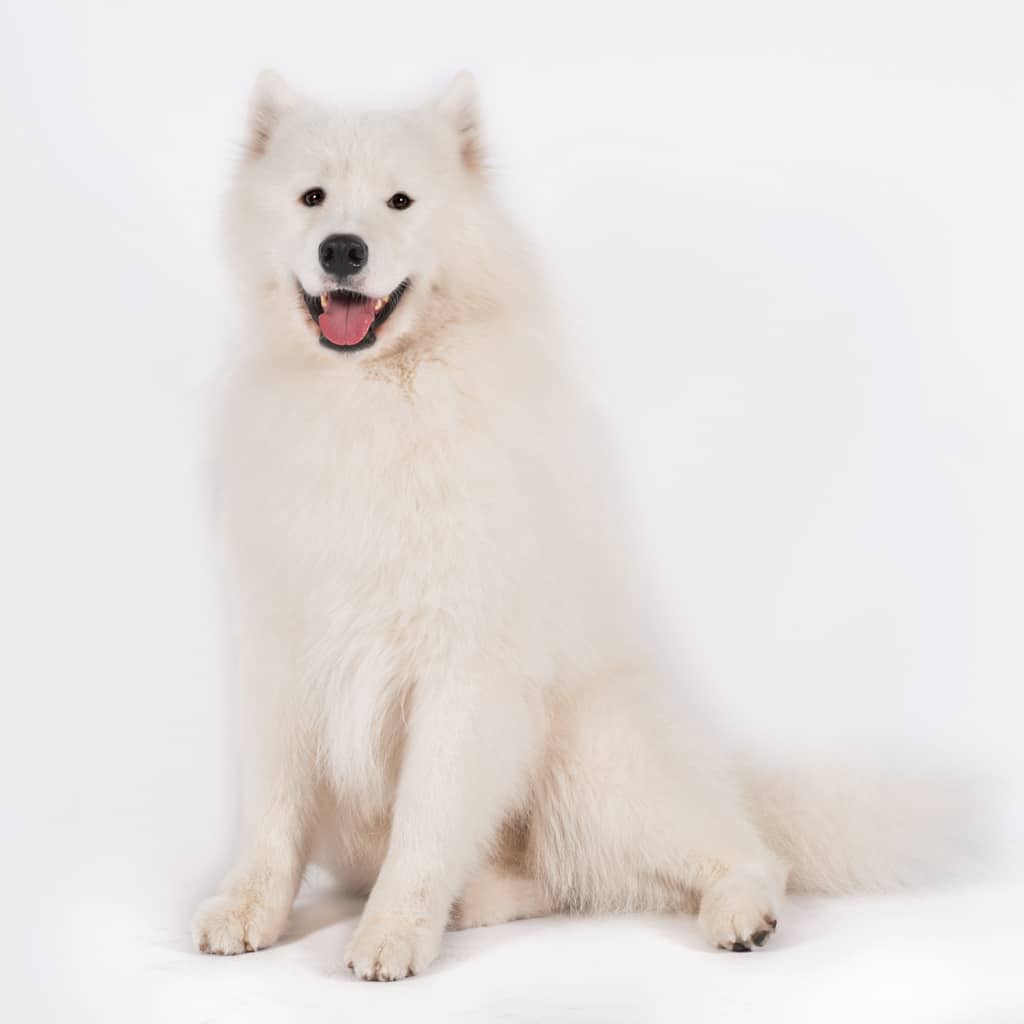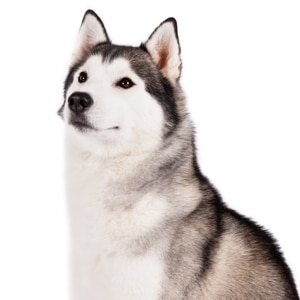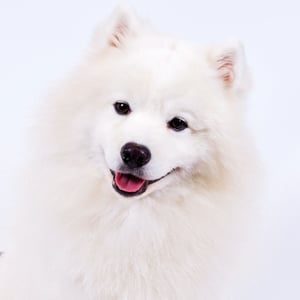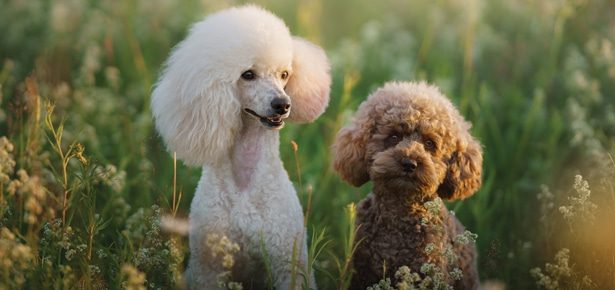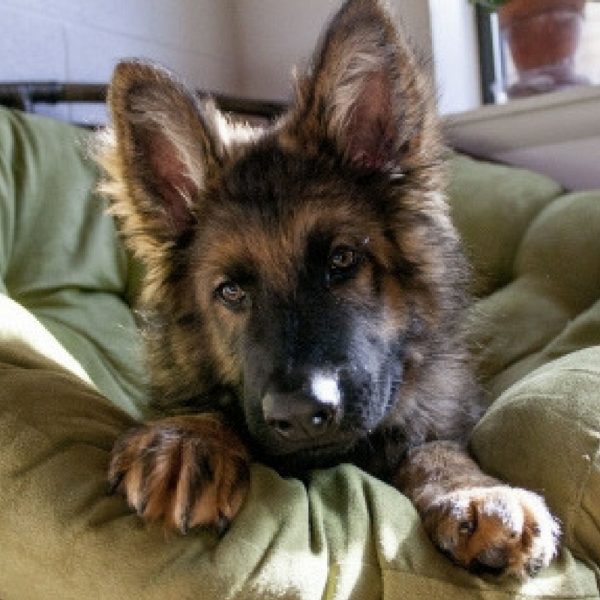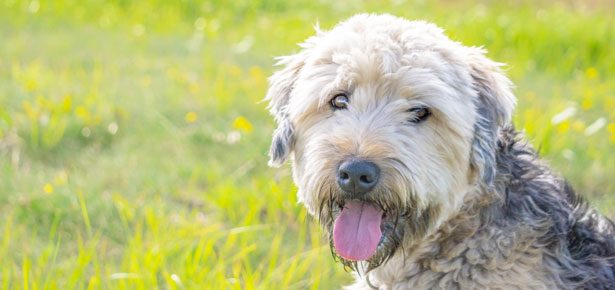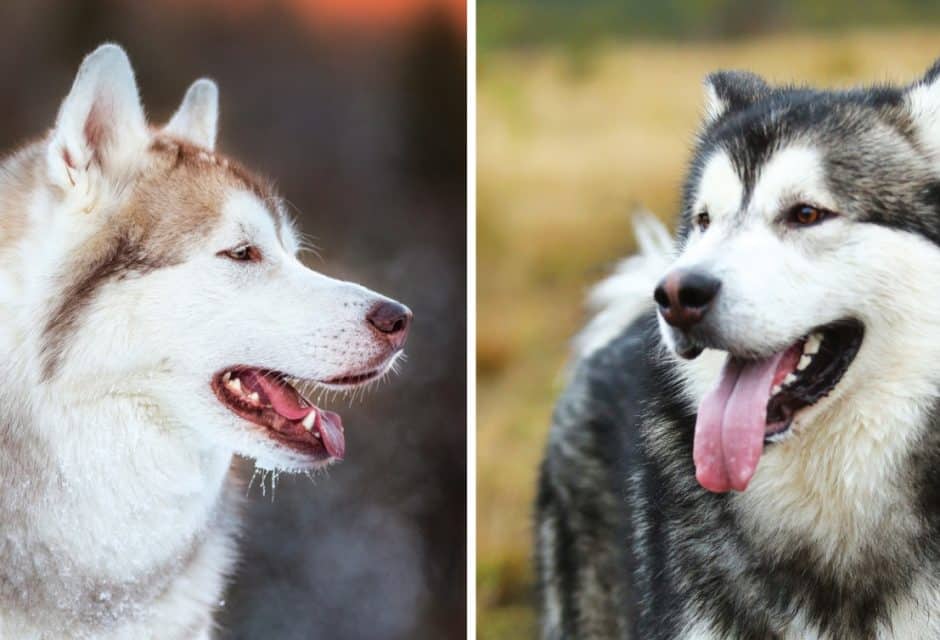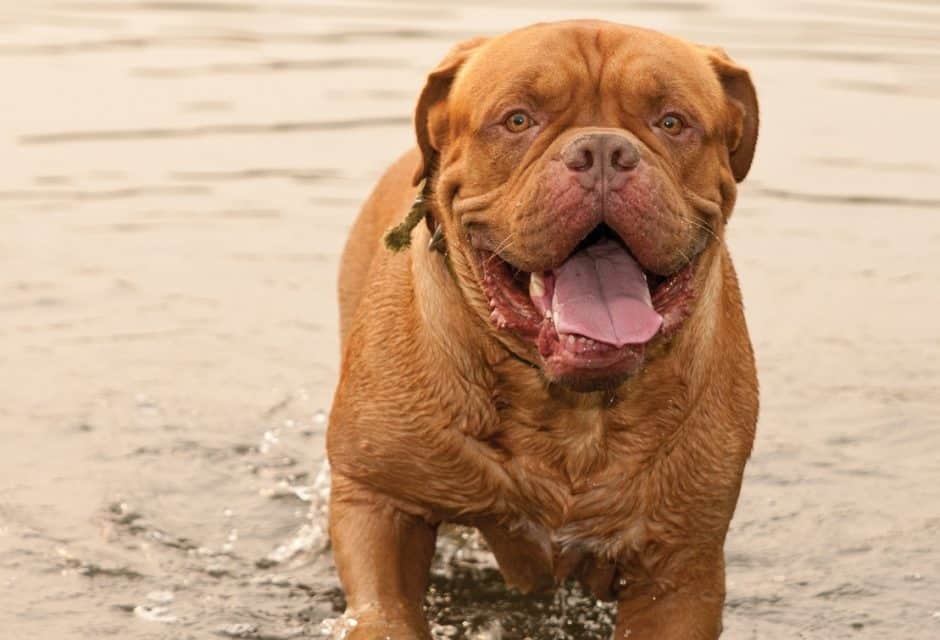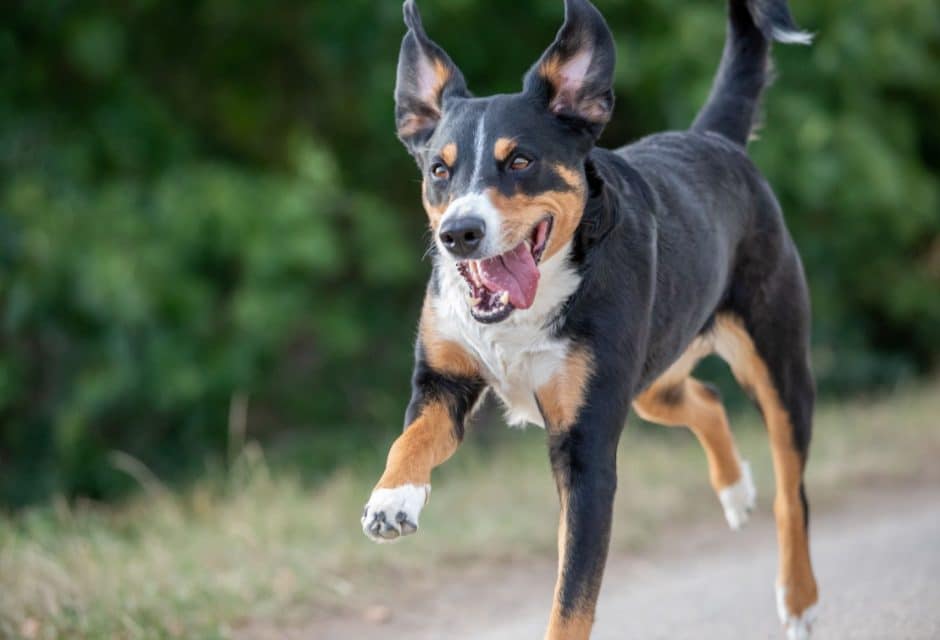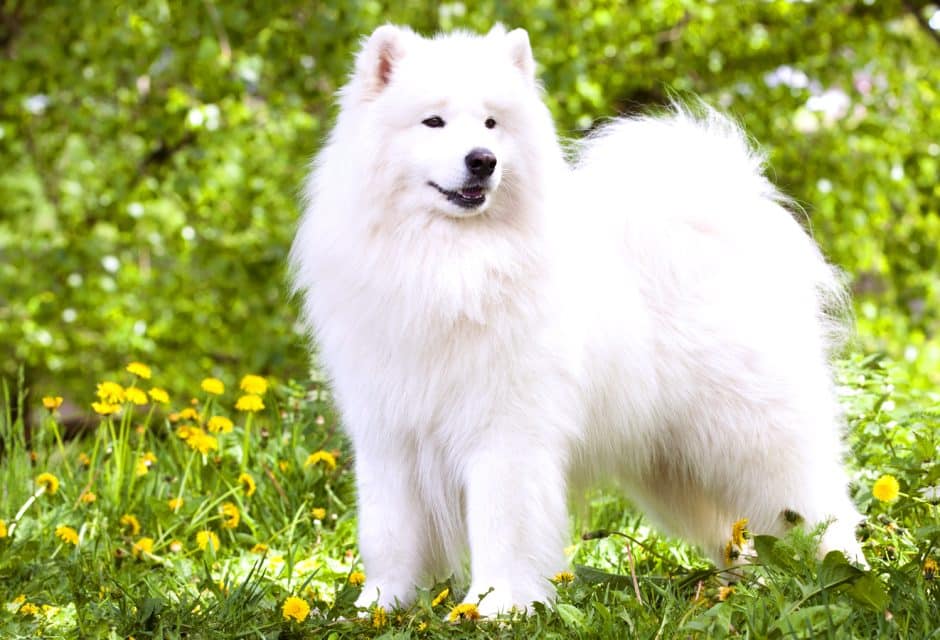
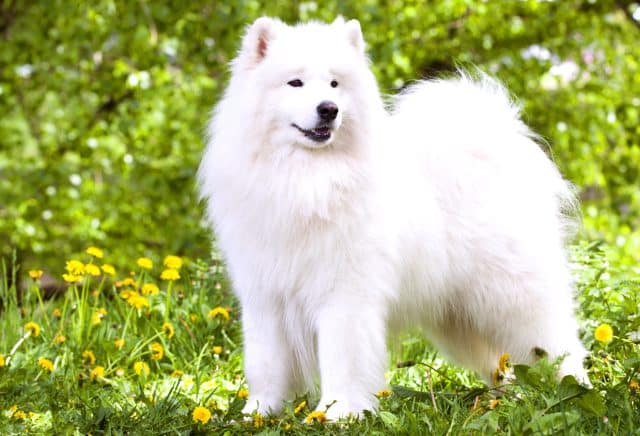
The Samoyed
More than just a pretty face
“What a pretty dog!” It’s the kind of comment you very well might make upon seeing a Samoyed.
To be sure, this is a beautiful dog—but he’s so much more. He’s a purpose-built machine whose history, function, capabilities, and immense charm put him in a class all of his own.
The Samoyed is one of the oldest breeds of dogs, developed many centuries ago by the nomadic Samoyed tribes of north-central Siberia. The tribe traveled from Iran up to the northernmost reaches of the tundra, using dogs to pull sledges and herd and guard reindeer. Interestingly, these nomads also chose to live closely with
their dogs, sharing their homes with them and even sleeping together, the latter occurring likely for both companionship and additional warmth.
Life in these regions was harsh, so the Samoyed people had to breed dogs that could work in some of the most frigid temperatures and roughest terrain in the world. Being situated so remotely served to protect the breed—it was spared from outside influences—and ensured that the Samoyed developed as intended. Left to their own devices, the Samoyed people were able to breed a dog that fit their lifestyle perfectly.
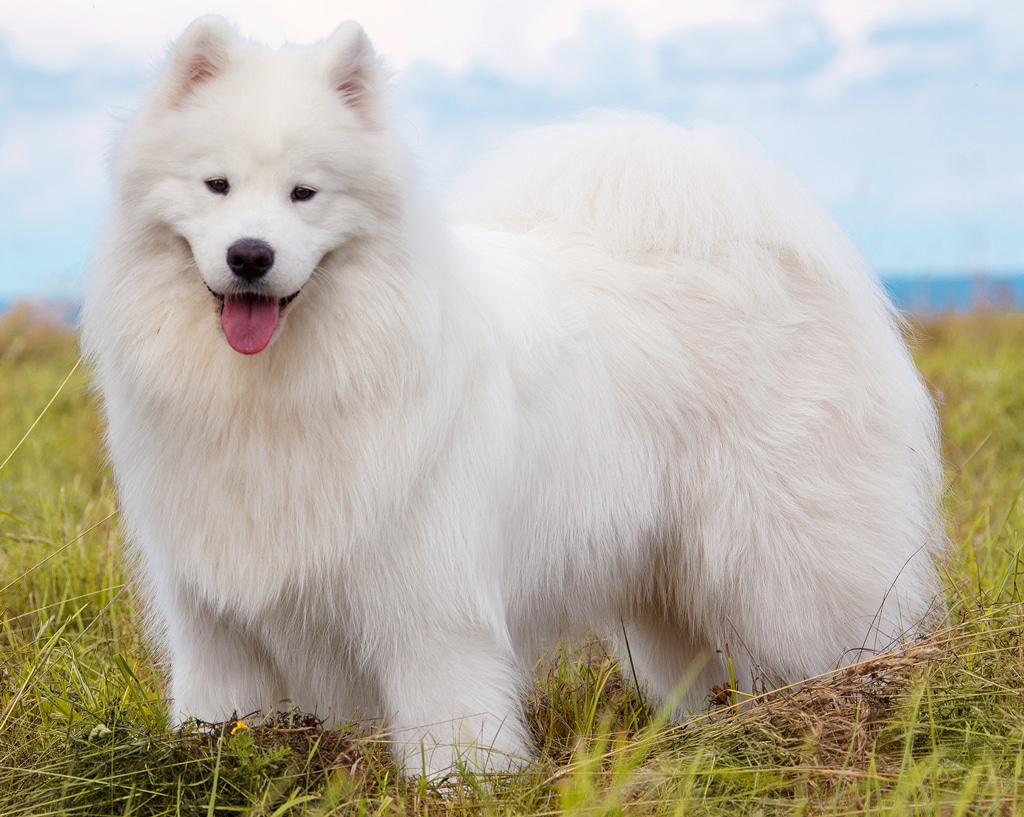
Koljambus/Bigstock
During the latter part of the 19th century, the Samoyed people made contact with polar explorers who were attempting to chart the Arctic regions. These men needed dogs to pull their sleds and some bought dogs from the Samoyed people. The explorers praised the Samoyed dogs for their hard-working yet friendly temperament. True, the Samoyed couldn’t compete with the Siberian Husky when it came to speed and didn’t possess the power of the Alaskan Malamute, but the breed nonetheless had its place as a sled dog—including a superior ability to navigate over the difficult terrain that often slowed down other breeds. For this reason, many explorers felt they were a sound choice. Nansen, Jackson, Borchgrevink, Shackleton—all the pioneers of polar exploration used Samoyeds to some degree. In 1911, it was a Samoyed who led Roald Amundsen’s team and was the first dog to reach the South Pole.
Sadly, only a small percentage of dogs used on the polar expeditions survived. Of the handful that did, some were later displayed in zoos, while others were brought to England where enthusiasts further developed the breed. The first breed standard was created in England in 1909 and the Samoyed Club of America was founded
in 1923.
Most Popular Dogs in the US
According to the most recent AKC registration statistics (2022)
[1] French Bulldog
[2] Labrador Retriever
[3] Golden Retriever
[4] German Shepherd
[5] Poodle
[6] Bulldog
[7] Rottweiler
[8] Beagle
[9] Dachshund
[10] German Shorthaired Pointer
[53] Samoyed
Today’s Samoyed looks much the same as he would have way back when. He’s a medium-sized dog that the American Kennel Club (AKC) accepts in biscuit, cream, white, and white and biscuit coat colours. The Samoyed, then as now, is purpose-built from stem to stern. His thick, luxurious coat has a practical purpose: it protects the Samoyed from cold and wind. Even his trademark smile—one of his most enchanting features—serves a practical purpose. The upturned corners of the mouth prevent the Samoyed from drooling, so icicles don’t form on his face.
If you’re looking for a guard dog, the Sammy won’t fit the bill. Devoted though he is to his guardians, he’s a trusting dog by nature and will almost certainly greet an intruder with a tail wag and a smile. He will, however, serve as a watch dog of sorts, likely barking when any stranger approaches with a loud voice that may deter some unwanted guests.
With his ancient origins as a companion animal, the Samoyed is well suited for the role of family pet. Samoyed fanciers point to the breed’s easygoing disposition, loyal temperament, and sense of his humour. However, it’s important to note that this is a working breed, with instincts that remain strong. He’ll likely chase other animals and, given his nomadic roots, it’s no surprise that these dogs will run for miles on end if given the chance. For these reasons, a fenced-in yard is a must and the Samoyed should always be walked on-leash. Can this breed work for those in apartments or urban environments? Yes, but only if his family is truly committed to getting him the kind of exercise and stimulation that he needs on a daily basis.
That brings us to the subject of energy level. This breed needs to have a job of some sort. Choosing outlets for the Samoyed’s energy won’t be hard, because he’s remarkably versatile. A natural athlete who also possesses an easygoing personality, the Samoyed will likely enjoy just about any activity. Herding, carting, skijoring, agility, obedience, therapy visits… the Sammy truly is a breed that can do it all—and look great doing it!
Basic obedience training for the Samoyed is a must. It’s important to harness all of that energy in a positive way. Part of the Samoyed’s fun personality is exuberance that, left unchecked, will lead to a dog that’s likely to jump up on people, bark excessively, and so forth. But, while he has ample energy and a mind of his own, the Samoyed is eager to please. Independent-minded yet loyal to his family, the well-mannered (read: tended to and trained) Samoyed is an absolute dream.
Profile: The Samoyed
Size: Medium
The AKC accepts males in height ranging from 21 to 23 inches at the withers, and females from 19 to 21. Although weight is not addressed in the standard, the Sammy is considered a heavily-boned breed.
Activity Level: 4/5
This athletic breed needs lots of exercise and a job. Daily walks are a must, but to thrive the Samoyed should participate in an activity or two for physical and mental stimulation.
Grooming: 4/5
Regular brushing will keep the Samoyed’s dense double coat free of mats. During shedding season, once or twice a year, expect to brush him daily and vacuum your home as often.
Heritage:
This ancient breed was developed by the nomadic Samoyed tribes in northeast Siberia to herd and protect reindeer and provide family companionship.
For more information on Samoyed rescue in the U.S. and Canada, visit samoyed.org/rescontacts/.
Thus it goes without saying that the Samoyed will not thrive in an environment with extended periods of isolation. Although his coat certainly makes him a fit for an outdoor lifestyle, his temperament doesn’t—he’s a family dog by nature and will only thrive if he’s an integral part of a family unit. It’s also important to note that, like most Nordic breeds, the Samoyed is quite a talker. Some are noisier than others and some have a higher-pitched range but none are silent.
As for that glorious coat, you may rightly wonder just how much effort is involved in keeping it looking fabulous. Regular brushing and combing are absolute musts to prevent mats. And this breed sheds—a lot. Hair and fur on your clothing, your furniture, and likely in places you’d never imagined you’d find drifts of hair are all par for the course when you live with a Sammy. On the upside, the Samoyed is rather unique in that he possesses very little odour—even when wet! Fans will say the shedding is a very small price to pay for the companionship of the fun and charming breed.
The tribal Samoyed people accomplished something quite extraordinary. They developed a beautiful, hearty breed that could work for them and live with them in absolute harmony. The Sammy’s got too many talents to mention, but his greatest gift is the love he’ll lavish upon you in his service as your loyal friend.
If you like the Samoyed, you might also consider the:
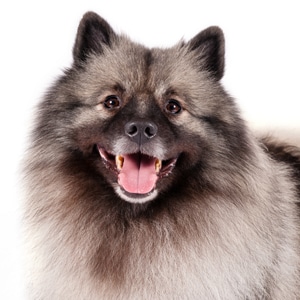
Siberian Husky Keeshond American Eskimo Dog
» Read Your Breed For more breed profiles, go to moderndogmagazine.com/breeds
This article originally appeared in the award-winning Modern Dog magazine. Subscribe today!
Join the newsletter and never miss out on dog content again!
"*" indicates required fields
By clicking the arrow, you agree to our web Terms of Use and Privacy & Cookie Policy. Easy unsubscribe links are provided in every email.

